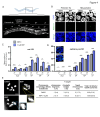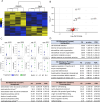Exposure to benzyl butyl phthalate (BBP) leads to increased double-strand break formation and germline dysfunction in Caenorhabditis elegans
- PMID: 39446714
- PMCID: PMC11500915
- DOI: 10.1371/journal.pgen.1011434
Exposure to benzyl butyl phthalate (BBP) leads to increased double-strand break formation and germline dysfunction in Caenorhabditis elegans
Abstract
Benzyl butyl phthalate (BBP), a plasticizer found in a wide range of consumer products including vinyl flooring, carpet backing, food packaging, personal care products, and children's toys, is an endocrine-disrupting chemical linked to impaired reproduction and development in humans. Despite evidence that BBP exposure perturbs the integrity of male and female gametes, its direct effect on early meiotic events is understudied. Here, using the nematode Caenorhabditis elegans, we show that BBP exposure elicits a non-monotonic dose response on the rate of X-chromosome nondisjunction measured using a high-throughput screening platform. From among the range of doses tested (1, 10, 100 and 500 μM BBP), we found that 10 μM BBP elicited the strongest effect on the germline, resulting in increased germ cell apoptosis and chromosome organization defects. Mass spectrometry analysis shows that C. elegans efficiently metabolizes BBP into its primary metabolites, monobutyl phthalate (MBP) and monobenzyl phthalate (MBzP), and that the levels of BBP, MBP, and MBzP detected in the worm are within the range detected in human biological samples. Exposure to 10 μM BBP leads to germlines with enlarged mitotic nuclei, altered meiotic progression, activation of a p53/CEP-1-dependent DNA damage checkpoint, increased double-strand break levels throughout the germline, chromosome morphology defects in oocytes at diakinesis, and increased oxidative stress. RNA sequencing analysis indicates that BBP exposure results in the altered expression of genes involved in xenobiotic metabolic processes, extracellular matrix organization, oocyte morphogenesis, meiotic cell cycle, and oxidoreduction. Taken together, we propose that C. elegans exposure to BBP leads to increased oxidative stress and double-strand break formation, thereby compromising germline genomic integrity and chromosome segregation.
Copyright: © 2024 Henderson et al. This is an open access article distributed under the terms of the Creative Commons Attribution License, which permits unrestricted use, distribution, and reproduction in any medium, provided the original author and source are credited.
Conflict of interest statement
The authors have declared that no competing interests exist.
Figures






References
MeSH terms
Substances
LinkOut - more resources
Full Text Sources
Molecular Biology Databases
Research Materials
Miscellaneous

